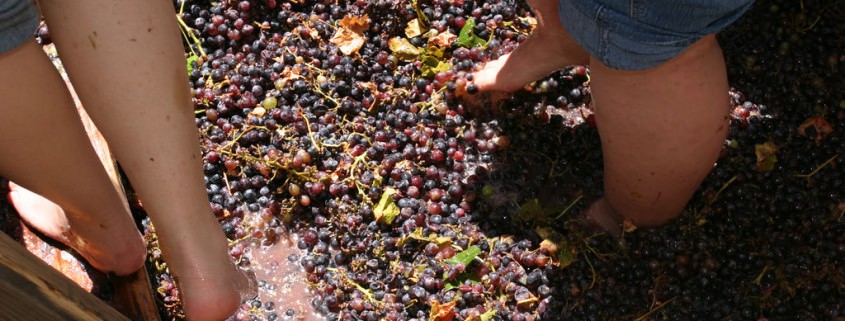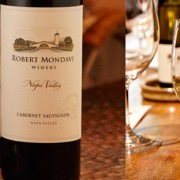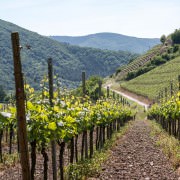What’s the Story of Your Wine?
When your customers decide to buy a bottle of your wine, they are, in essence, gambling. They put their money on the table with the belief that the wine they’re ordering will be great. Sometimes, your customers are amazed by the wine they place their bet on, sometimes they think it’s okay, and sometimes they make the wrong choice and they flat-out hate it. When that happens, they’ll never come back to your restaurant again, no matter how good your food is.
Because wine has become such an intimidating drink, and because so many of your customers are too nervous to make such an expensive bet, you aren’t selling as much wine as you’d like. How can you fix this? You can make your wine relatable to your customers by sharing each bottle’s story.
What’s the Story of Your Wine?
Wine can have many stories, and it is up to your servers (or to you and your digital wine menus) to share the right story with the right diners. These stories can range from something simple to something complex. A simple wine story could just be a description of the place the wine comes from, along with a clarification about the grapes and some tempting tasting notes. A more in-depth story could include a few fast facts about the winery, and a complex story could be a brief summary of the winery’s history, or a history of the original winemakers.
Your job is to keep up with the stories for the various brands and varieties you sell, and train your servers so they understand those stories (or program the information into your digital wine menu). Here are some stories that should pique your guests’ interest. Remember to try to upsell your guests’ tickets by having your servers volunteer this information.
The Simple Story
This Santa Margherita Pino Grigio is from Italy and is so good that it’s the #1 most requested wine in the US. It features a pale, straw yellow color, and as you sip it, you’ll catch hints of its green apple aroma. The flavor is crisp and refreshing, with a slight taste of citrus fruit in each sip, and it carries through to a long, yet delicate finish.
This simple story can convince guests who have already decided to order a wine, but who are undecided about which one they want to enjoy. When you provide tasting and aroma descriptions, your guests can easily imagine the taste of their drink and how it would blend with their meal.
The In-Depth Story
This Barefoot Cellars Cabernet Sauvignon is made in California and tastes of berries and vanilla, but it isn’t sweet. It’s got juicy mouthfeel, as a good Cabernet Sauvignon should, but even though this wine is great to taste and the winery has won tons of awards, I just love that Barefoot is so committed to doing good in the world. Ever since they started, Barefoot has always made sure to support human rights and equality around the world, and I can really stand behind a winery that makes such a great impact in the world. Plus, I think it’s really cool that Barefoot came up with their logo when one of the founders stepped on paper with her paint-covered foot.
This story can draw in a guest who hasn’t yet decided to order a wine, but showed some interest in a particular brand or varietal. Not only can the guest clearly imagine the taste of their drink, they also know that their purchase supports a good cause and that the winery has a history of award-winning wines.
The Complex Story
This Buena Vista 2010 Sonoma Pinot Noir is made in Sonoma, California and has red berry flavors and aromas, with a slightly earthy taste and hints of vanilla. It has great mouth feel with a long silky finish, so it’s sure to be satisfying. The growing season for this bottle’s grapes was longer and cooler than usual, so the flavors really developed into something special… which is probably what made it win the Gold Medal and Best in Class at the LA International Wine Competition. This winery though, has a really unique story. The winery was started by this Hungarian guy who called himself “The Count of Buena Vista.” He moved to California during the Gold Rush, but he didn’t care about gold, he cared about wine, which he called “purple gold.” He travelled up and down the coast to determine the perfect climate to grow delicious grapes, and when he found it, he made sure his winery was well-grounded. He went on a trip to Europe to bring back 487 varietals for his vineyard–he even traveled over the Alps on a mule to get some vine samples! He made his winery a serious success, but he lost the vineyard to his investors and then decided to try his hand at rum production in Nicaragua. While he was there, he fell off of a tree branch while he was crossing an alligator-infested stream and he died. Pretty incredible story, huh?
This story serves to convince a guest who wasn’t even considering wine to buy a bottle. With accurate and alluring tasting descriptions, information about the growing season, and a story that involves alligators, how could your guests not buy a bottle? I know that I would be willing to exceed my budget if I heard a wine story like that.
Photo licensed by Jeffrey Keeton
- Why Your Wine Menu Is Scaring Your Guests - February 27, 2015
- How to Host a Better Restaurant Week and Get More Customers - February 23, 2015
- Choosing Your Restaurant Wine Glass – 3 Approaches - February 16, 2015









